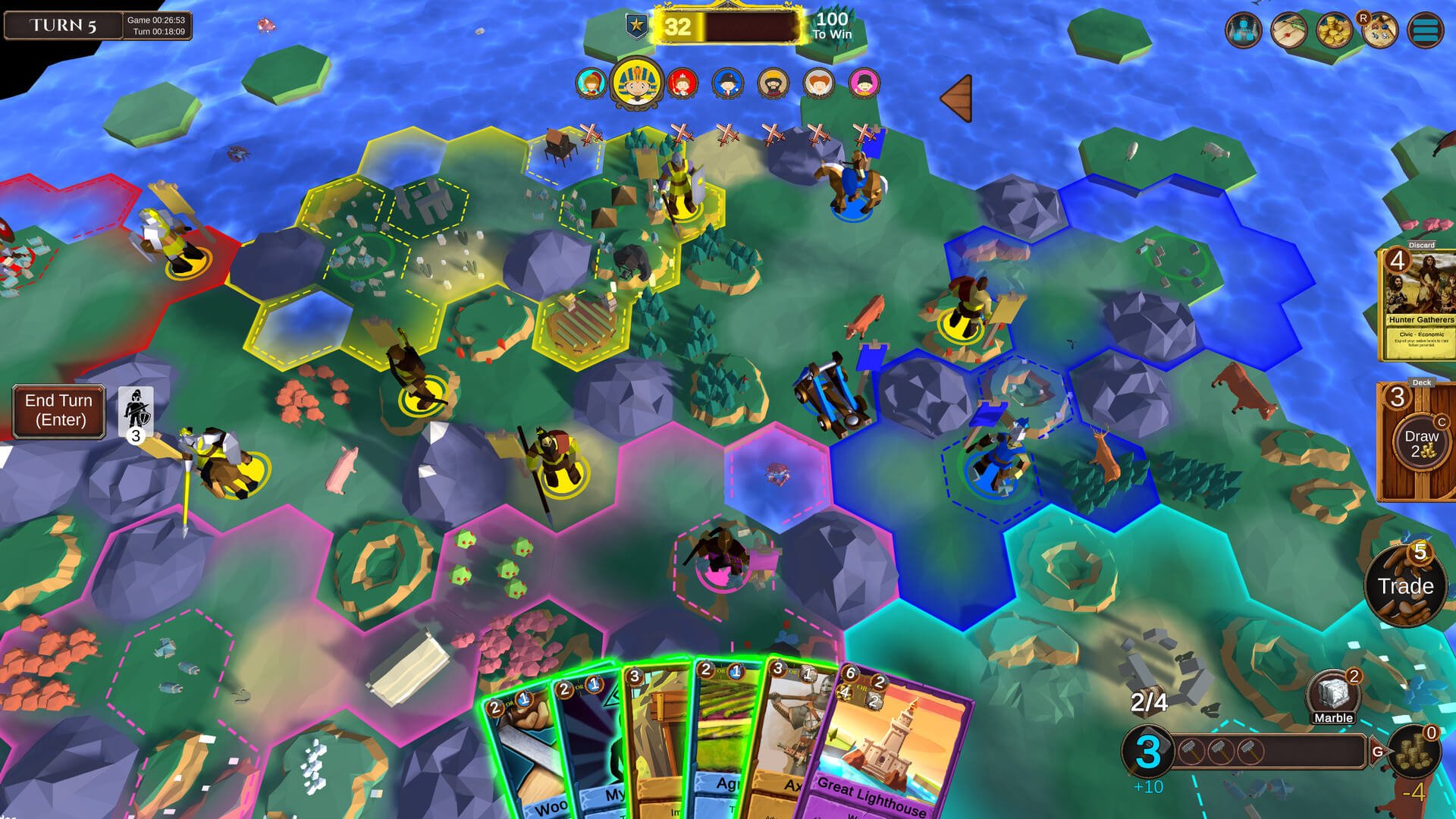Steam Next Fest is here, and that means hundreds of demos for upcoming indie games. Hexarchy, the deckbuilding 4X title from Main Tank Software, has been my drug of choice this time around. With multiplayer and daily challenges unlocked on the demo version for the duration of the event, it’s a great time to check out this exciting strategy game.
Gameplay
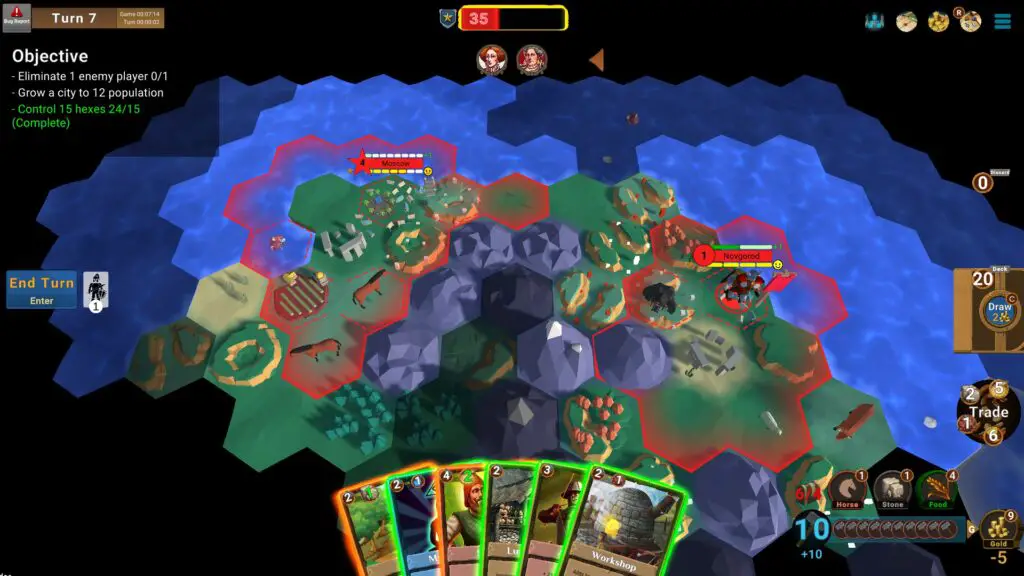
All the hallmarks of 4X gameplay are here – you’ll explore, expand, exploit, and exterminate across a hex-based map with up to ten players. The twist is that almost everything you do will be determined by the hand you draw each turn from your deck of cards. Training units, constructing improvements, and researching new technology are all done via a deckbuilding system, and it works better than you might expect.
Civilization players will quickly recognize the opening of a Hexarchy game; you’re given a small area of the map on which to place your starting city. Once that’s done, it starts generating Food, Production, and Gold. From there, you can play cards to the board using Production as “Mana.” Any cards you don’t play are discarded at the end of the turn and shuffled back into your deck when the last card is drawn.
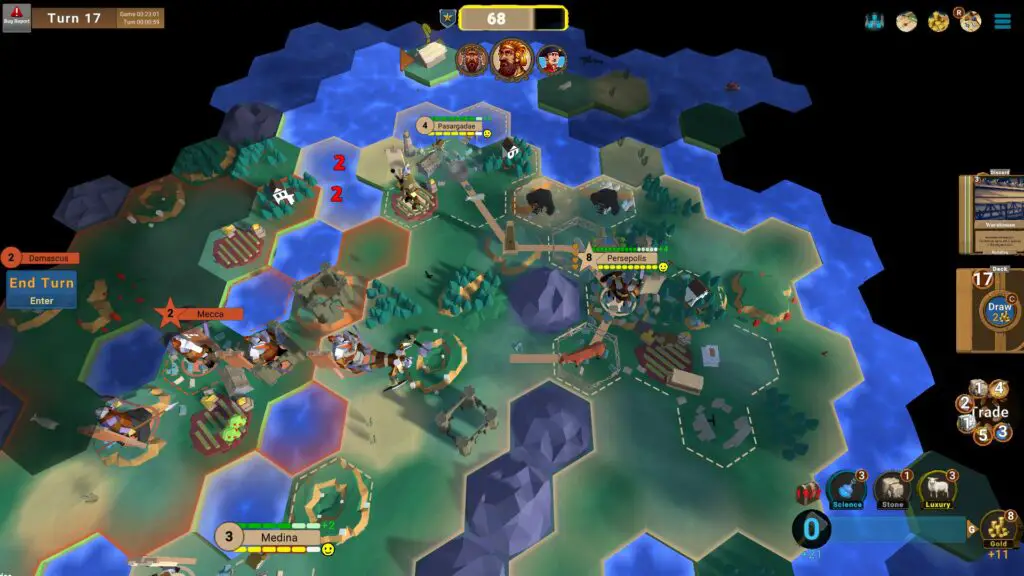
Some cards have alternate costs – for example, you can pay 5 Production to deploy a Swordsman or you can use 1 unit of Iron. Technology cards, in particular, make use of this mechanic; you can spend accumulated Science in place of Production, freeing yourself to play other cards. When a Technology card is played, it opens a “pack” of related cards which are added to your deck, often including at least one further Technology so you can continue down the research tree later.
As with any deckbuilding game, you’ll need to keep your deck lean to have the consistency you’ll need as the game goes on. Any cards in your hand can be permanently destroyed, turning them into 1 Production to be used on that turn. The first card destroyed in this manner on a turn also provides 1 Science. While this is not an efficient way of gaining Production, it allows you to remove obsolete cards from the game so they no longer take up space in your deck.
If you’re in a strong position economically, you can even spend Gold to draw more cards. Wealthy empires can burn through their entire deck in a single turn, but by the time you reach that point the game is likely nearing its end. More often you’ll use Gold to pay for the upkeep of your cities and military units. Units and cities are more expensive the further they are from your road network, so connecting new cities and building roads to enemy borders will keep you from going into debt.
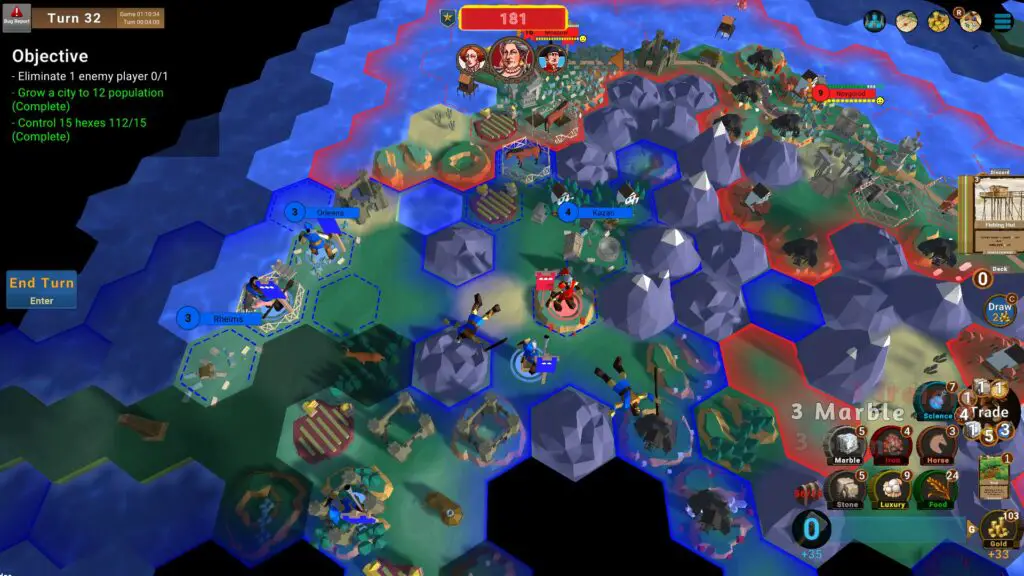
Unlike many 4X games, Hexarchy uses an inventory system where you can keep limited resources from turn to turn. You can expand your inventory by building Warehouses, but you’ll almost never keep everything you harvest. Resources can be assigned from the inventory directly to cities – Food to increase the population, Luxuries to raise happiness – or put on the market for other empires to purchase. You can even store cards from your hand and draw them back next turn without discarding them.
At the end of the turn, any excess items in your inventory are automatically distributed; Food and Luxuries go to cities that can use them, and any leftovers are automatically sent to the market. This makes it important to manually manage your resources so you aren’t at the mercy of the AI at the end of the turn.
The game uses a simple Victory Point system to determine the winner. Points are calculated at the start of each turn based on population, the number of hexes controlled, wonders, and holy sites. Empires also get bonus points for each city that starts the turn with maximum happiness. If any player begins a turn with 150 or more Victory Points, they are declared the winner. This allows for fast-paced, close games when players are evenly matched.
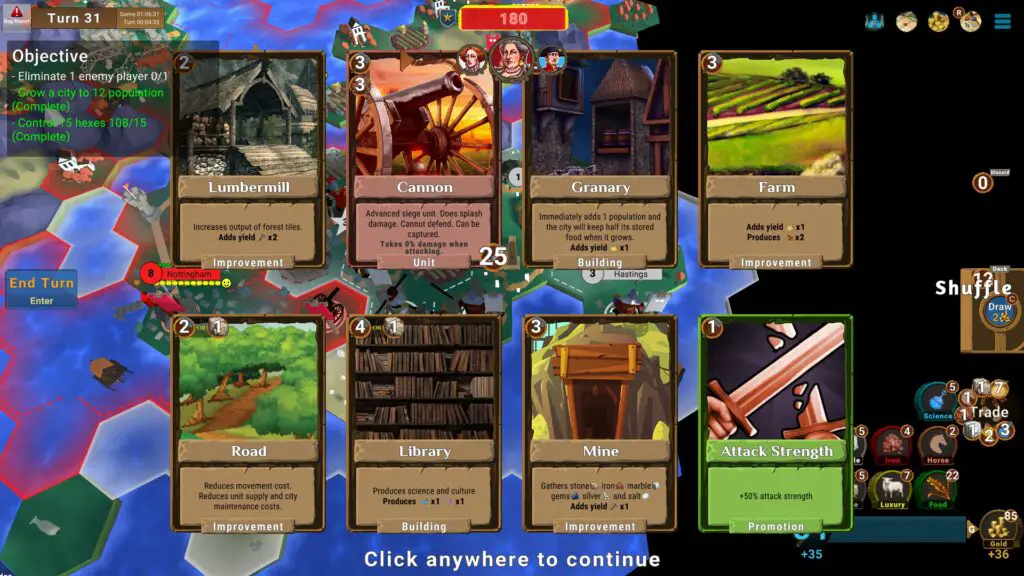
For the most part, each civilization plays the same. In the current version, all playable civs begin the game with a unique card in their deck that provides a small but useful effect. Persia, for example, can use its Satrap card to claim a tile just outside their borders, while Russia’s Resilience lets them fend off starvation or speed growth by automatically filling a city’s Food supply to fifty percent. None of the abilities I’ve seen thus far are game-breaking, and they add just enough flavor to allow players to cater their civilization choice to their playstyle without sacrificing balance. It might be neat to see additional unique cards in the full version – possibly unlocked via Technology – but the game is just fine without them.
Diplomacy is limited to buying and selling goods through the neutral market; goods that are put up for sale can be purchased by any player, and the selling player gets a cut of the Gold. All players are technically at war at all times, and can freely invade, claim territory, and raze or conquer cities. Building forts and barracks in contested areas and roads to keep your troops supplied is the key to taking your opponents’ territory.
Next Fest Content
In addition to multiplayer (which is a blast but currently limited by a small player base, making it tough to get a match) Hexarchy includes Daily Challenges. These bite-sized campaigns put players on a fixed map as a fixed civilization and tasks them with completing a list of objectives as quickly as possible. The daily leaderboard is determined by who can complete the challenge in the fewest number of turns, with the final Victory Point score used as the tiebreaker. I’ve found these challenges to be a fantastic way to warm up for or cool down from a day of gaming, and I’ll be sad to see them go when Next Fest ends.
Graphics & Sound
Hexarchy uses a low-poly style that works well with its cartoony feel. While terrain and resources are generally distinct, it is very difficult to tell the difference between unit types on the map. Hopefully the different units will be made easier to tell apart in the final version. With that exception, the colors are bright and pop off the screen without being distracting.
The card art is generally good, and each illustration is about what you’d expect for the card in question. The sound effects are consistent and useful indicators of what’s currently happening, but the soundtrack is generic to the point where I had to start up the game just to confirm whether there was music at all.
Overall
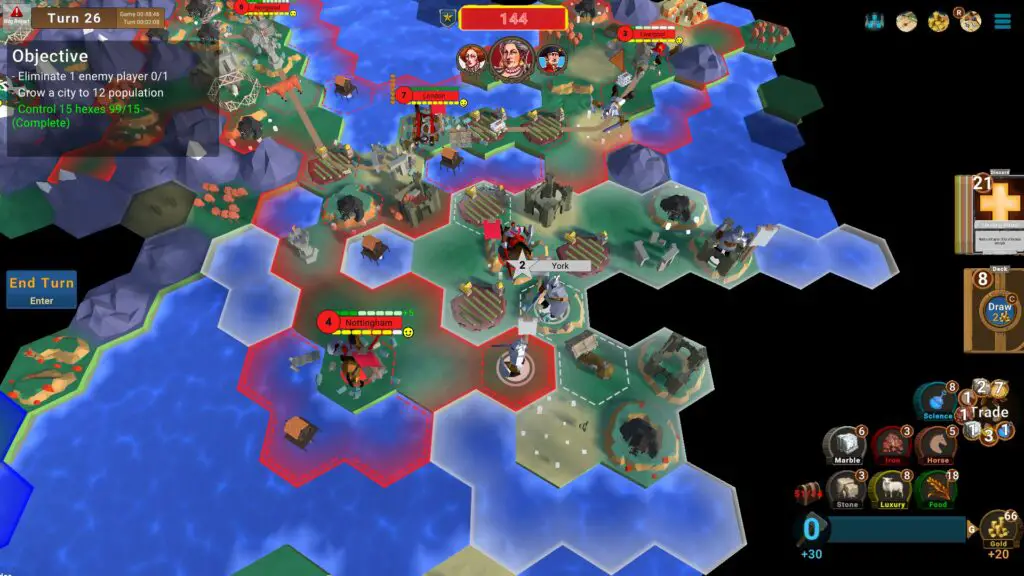
This is definitely a game to watch. It combines some of the best elements of several tried-and-true genres and does a great job of it. There’s some pre-release roughness to the game, so it’s definitely still a work in progress; the UI is particularly clunky, especially when issuing orders to units. Units can’t recognize a right-click as an attack, so you have to issue an attack order then click on their target. Otherwise, they attempt to plan an illegal move onto an occupied space.
Even if the multiplayer community doesn’t reach critical mass after launch (though I sincerely hope it does) there will still be plenty of fun to be had in singleplayer, especially as long as the Daily Challenges continue their rotation. To my knowledge, a release date hasn’t been announced yet but Hexarchy‘s Kickstarter campaign launches on 14 March (my birthday – certainly a good omen!) This is definitely an indie strategy title worth supporting.


